One of my favorite things to teach children is landscape because it involves concepts that they see often, but may have never really thought about before. One of those concepts is atmospheric perspective, or using value to create depth in a landscape.
For second and third grade students, I introduce the concept of atmospheric perspective by teaching them here, near and far. Objects that are here appear darker, larger and more detailed and are closer to the bottom of the paper. As you move toward the top of the paper where objects are farther away, they become lighter, smaller and have less detail. Objects in the middle are in the middle ground, which isn’t here or far, but somewhere in-between.
This lesson is based on the snowy landscapes created by the Group of Seven, a group of painters who used the Canadian landscape as inspiration for their artwork, launching the first major Canadian national art movement. If your students have never seen snow before, I would encourage you to show them a few examples from the Group of Seven before you begin.
Watch a quick video tutorial of the Here, Near & Far Winter Landscape…
Click the yellow button below to DOWNLOAD the free drawing handout for Here, Near & Far Winter Landscape, as well as this months February Freebie Pack. Just add your name and email and we’ll send it straight to you!
WHAT YOU’LL NEED:
– 9″ x 12″ piece of blue sulphite paper
– Medium round paintbrush
– Liquid tempera paint
– Chalk pastels
THE BACKGROUND
Use a white chalk pastel to draw three horizontal lines across your paper; one for the here section, one for near and one for far.
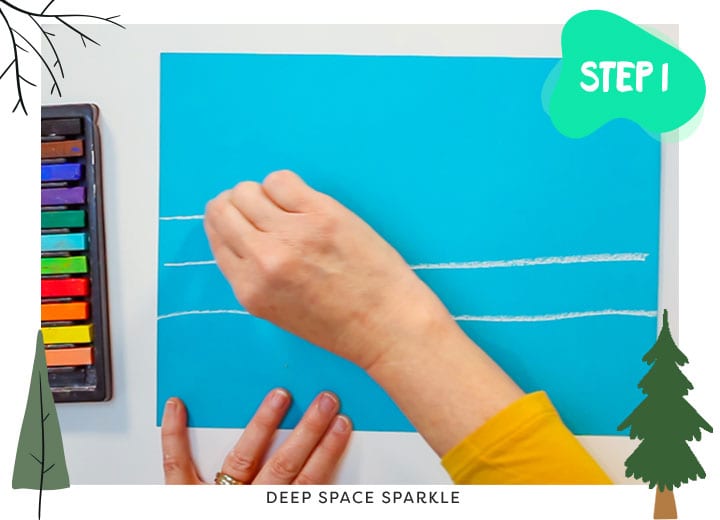
Add some white clouds in the sky and blend them out with one finger.
PAINTING THE SNOW
Use pure white paint for the snow that is closest to you at the bottom of the paper.
Add a bit of blue to your paint to darken it slightly. Paint the middle section.
Add even more blue to paint the farthest section. This section will be the darkest.
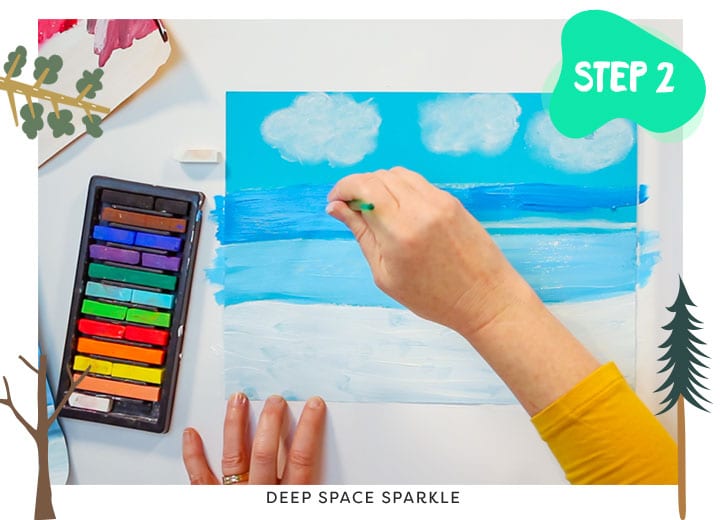
PAINTING THE TREES
Use light green paint, made by adding in lots of white to your green, to paint small triangular pine trees in the far section of your landscape, near the top of the page. Add downward strokes to give the trees some branches. These trees are the furthest away, so they’ll be the lightest in value and have the least detail.
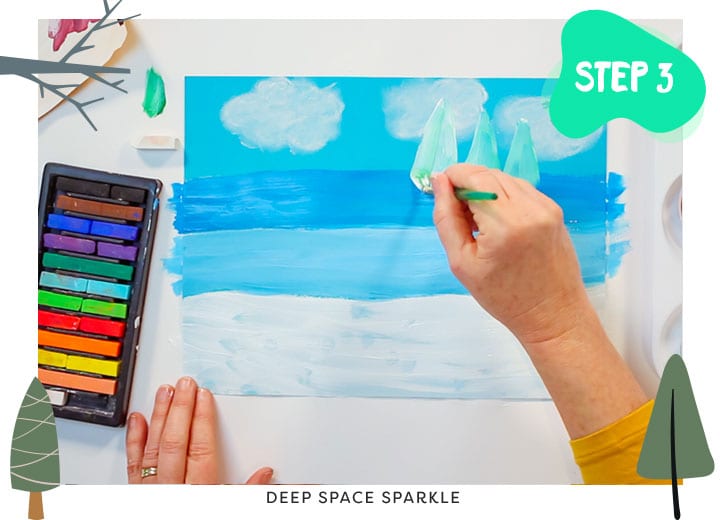
Move to the near section in the middle. Paint solid green trees, starting from the top and moving down in a triangular shape. These trees will be taller and darker than the trees in the background because they are closer.
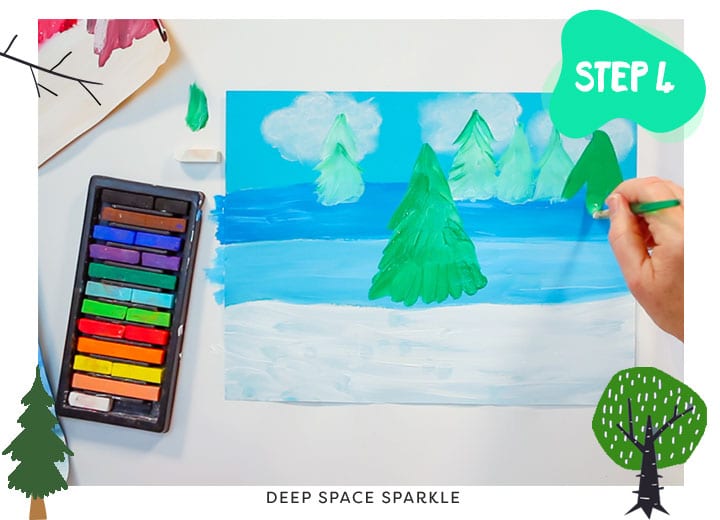
For the here section, add a tiny bit of black to your paintbrush to darken the green, since it is the closest tree. Start near the top of the paper and make a large tree that extends from the top to the bottom of the page. The tree in the near section will be the tallest, darkest and most detailed.
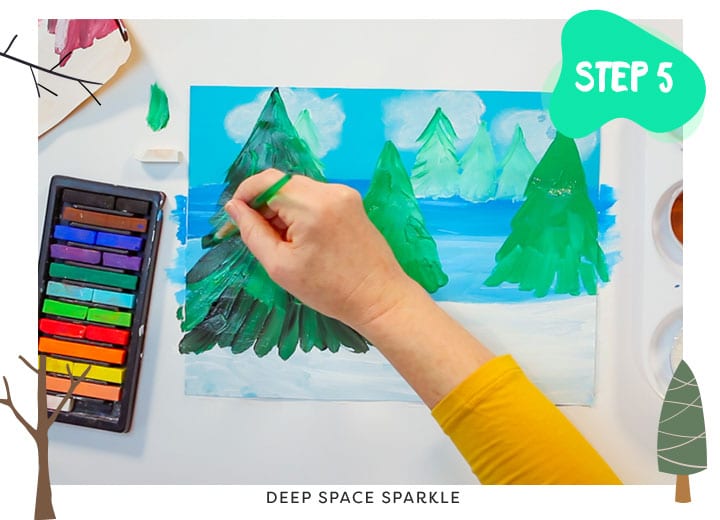
TIP: If you’re breaking this lesson up into two sections, this is a great place to stop for the first session to let everything dry.
ADDING DETAILS:
Add tree trunks with brown paint. You can even add some of the trunk that is visible between the branches.
Use blue paint to make some long shadows underneath the trees in the snow. The shadows should all go the same direction.
You can add a dark shadow to the trunk of the closest tree to give it some detail.
Use white paint and downward brush strokes to add snow to the tree branches. Start with the trees in the far section, then move forward. Think about where the snow would land on a tree; on the very top and along the tops of the branches.
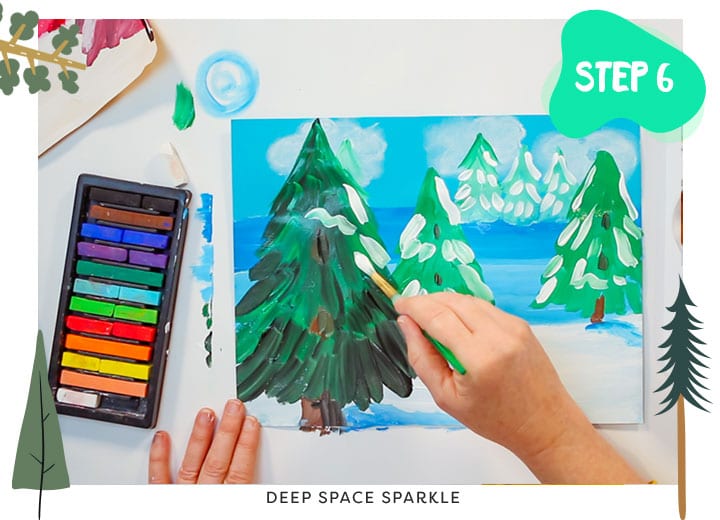
To finish off your snowy landscape, you can splatter some white tempera snow on top of the whole scene.
If you really want to get creative, you can try this lesson with a totally different color scheme using the same techniques to really liven up your winter landscape!
Have you done this lesson? I’d love to hear how the instructions worked for you or if you tried a new technique.
I created a detailed instructional training video within the Sparklers Membership Club where you can also get more detailed lesson plans including National Core Art Standards, Assessment Checklists, full length instruction videos and plenty other art lessons plans to choose from.
For more information on joining, sign up to our waitlist HERE.
Click the button below to DOWNLOAD the February Freebie Pack for more fun art lesson you can use this month!
Pin me!
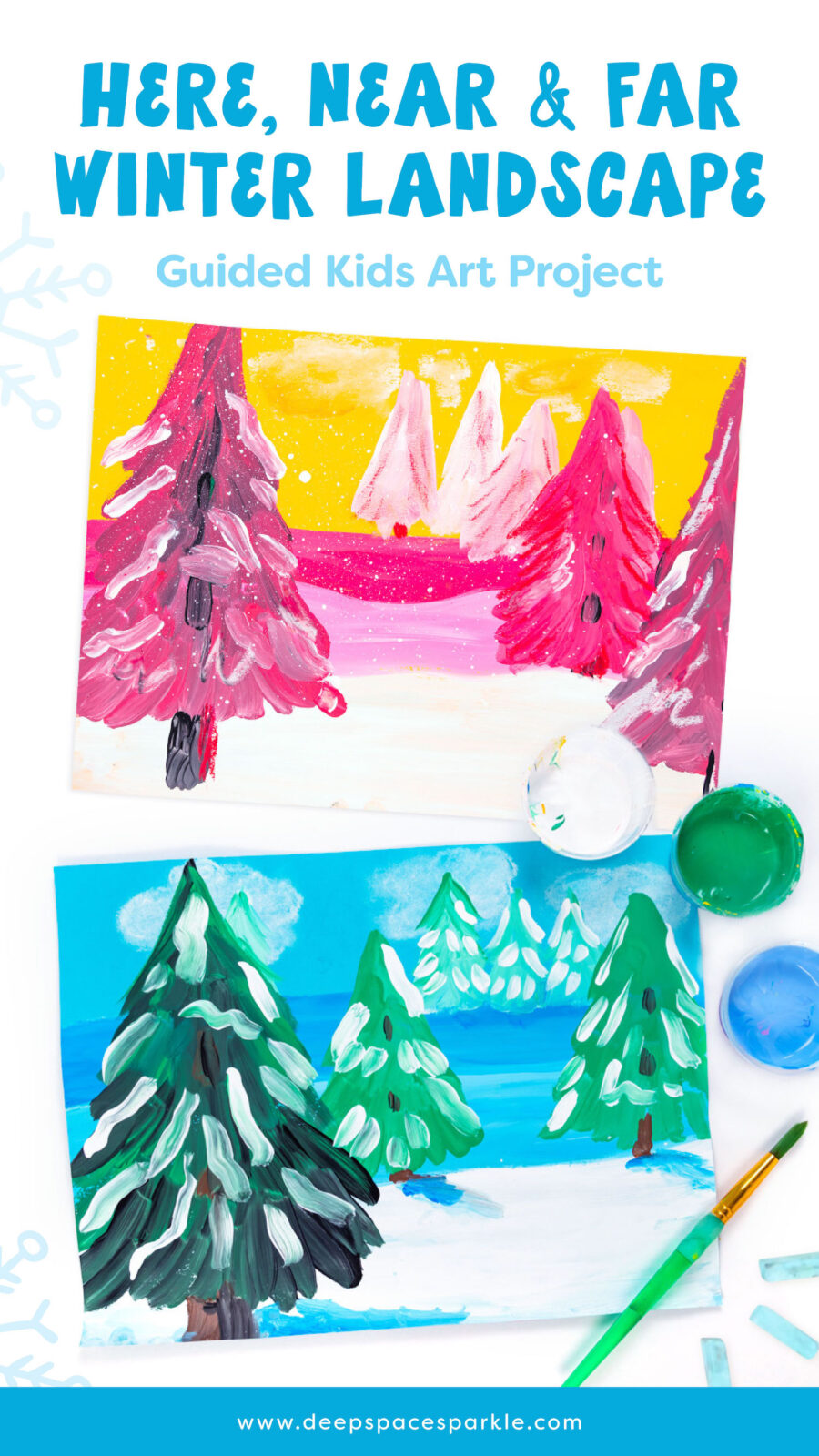

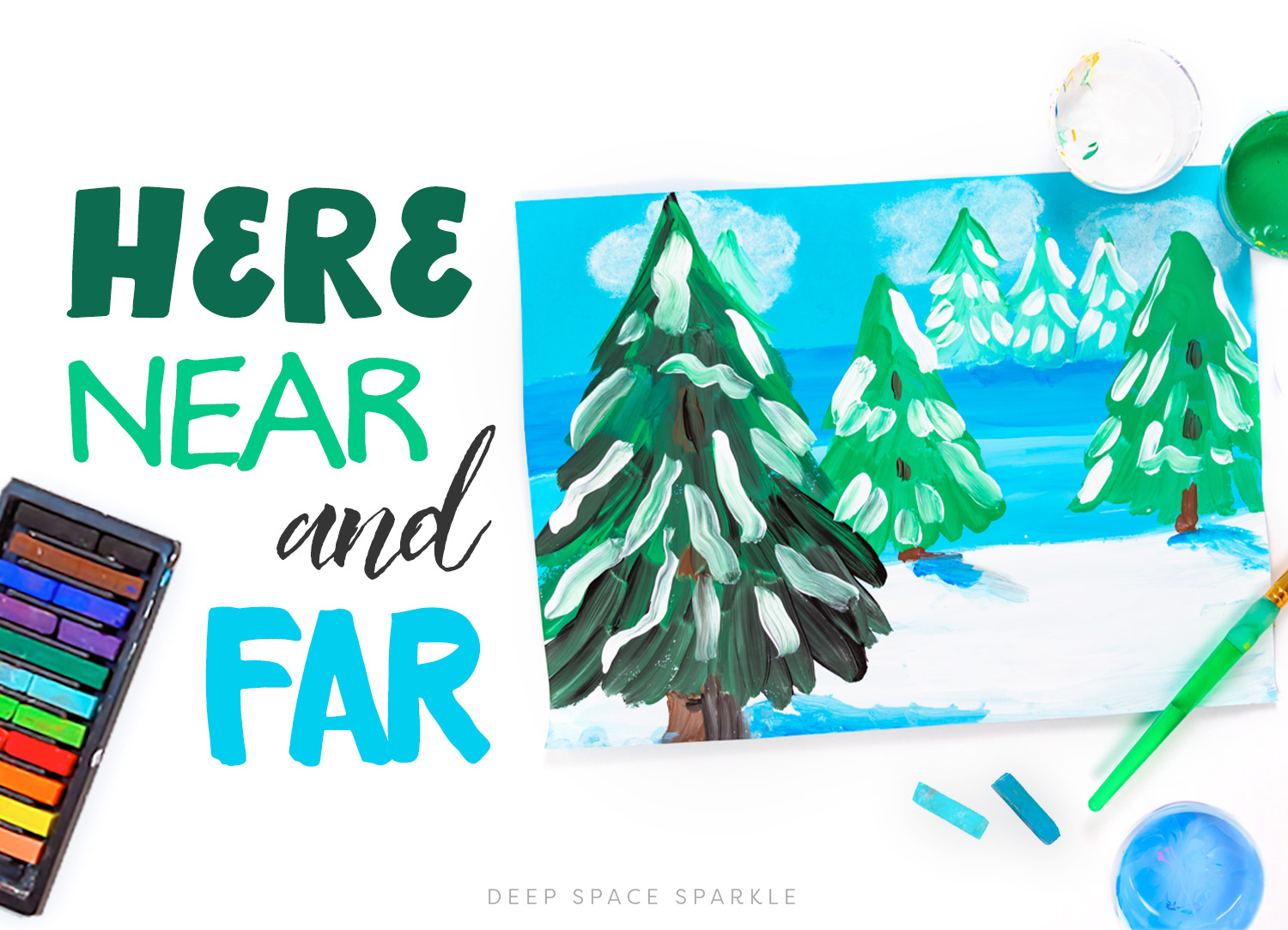












I love the quality of your instruction!
I love your effective way of breaking down the lesson into manageable parts. You are so inspieribg!
Love these!!
I have used many of your ideas and they always work out great. The students get so excited when they learn new concepts and then try them on their own the next day or two. Thank you for all of your help (as I really do not have an art background at all)
I think this is a great lesson. I am an Ohio art teacher and we have a new evaluation system where we have to show an art ” process”. I may use this lesson to show that my students understand foreground, middleground and background.
Great job! the instructions simply perfect!
Rita Berni Canani (Florence- Italy)
It looks so doable. I taught K, 1st, 2rd, 3rd grades over my 42 years. I now want my grandchildren to experience the wonder of art, with me.
:O 0-0 wow I like it and thx for sharing
I am going to try this with my students! This might sound silly but I’m having a hard time figuring out what sulphite paper is and where I can find it?
Sulphite paper is a smooth all-purpose paper that is available in various weights. Many schools use this paper as a default paper for art projects. We love Pacon Tru-Ray Construction/Sulphite paper. It’s around 76-80 lbs and works for paint, markers, collage, etc.
Thank you so much for your response! 🙂
Would crayons work in substitute for chalk pastels?
Nice lesson
How do you splatter the paint for the snow?
Hi there! Great question. An easy way to splatter some paint is to have the student hold a paintbrush dipped in white paint in your non-dominant hand and gently tap the top with the other so that the splatters fall onto the paper. I hope that helps!
I’m unable to download the “Here, Near, and Far” PDF. Please help.
Love this! But I’m a bit confused about the ground. Shouldn’t it be lighter as it goes back in space if you’re trying to show atmospheric perspective?
I had the same question.
Not necessarily. It would depend on where the sunlight is.
I really love this, but I wish the entire lesson was available in the Sparklers Club, with visuals and everything.
what brand of chalk pastels do you use?
Hi Elaine! Great question. Our favorite is the Sargent Art Square Chalk Pastel Sets. I hope that helps.
Your projects are perfect length. I’m a first year teacher and enjoy looking through them all and adjusting for my K-4th graders. I’m so thankful for your ideas. My students love the projects too.
beautiful lesson on ‘Value’. I can’t wait do with my Third graders.
This is SOOO cute! Do your students follow you as you do it step by step, or do you show them and then have them do it on their own? I’m afraid I’ll lose my students between steps as they wait.